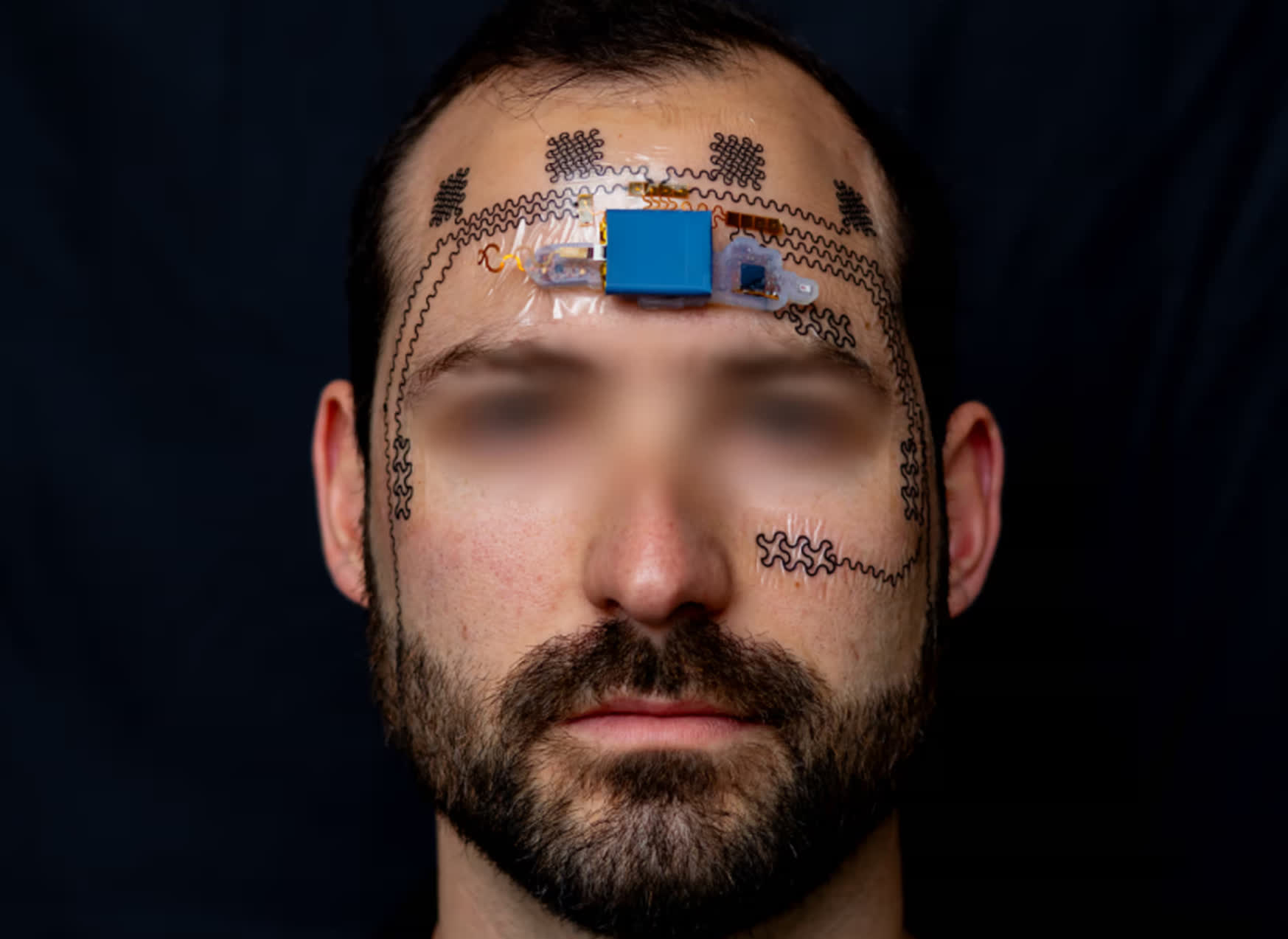WTF?! Would you be willing to wear a stick-on facial tattoo that makes you look like a poor Cyberpunk 2077 cosplayer? You might be more tempted by the fact it's designed to show when your brain is overworked and you're at risk of making errors.
Dr Nanshu Lu, an author of the research from the University of Texas at Austin, writes that the e-tattoo could be valuable for professions that require high levels of concentration for extended periods, such as air traffic controllers, vehicle drivers, pilots, and robot operators.
The device could give wearers warnings and alerts should it detect they are becoming mentally overloaded, allowing them to adjust their workload or ask a co-worker for some help.
"Technology is developing faster than human evolution. Our brain capacity cannot keep up and can easily get overloaded," said Lu. "There is an optimal mental workload for optimal performance, which differs from person to person."
"Previous studies indicated that the optimal mental performance occurs when the mental workload demand is not too low or too high," Lu added. "When it's too low, it's very boring, and the people will just lose focus."
Lu and colleagues write that using self-reporting questionnaires for mental workload assessment often results in participants not objectively reporting their cognitive effort, and they are often conducted after a task.
While traditional electroencephalography (EEG) and electrooculography (EOG) devices can be used for physiological mental workload monitoring, they are wired, bulky, and uncomfortable. They are also affected by head movements, meaning they're not exactly practical for real-world use.
The wireless forehead EEG and EOG sensor is designed to be as thin and conformable as possible. It is worn on the skin as a temporary tattoo sticker, which means it can be worn while the wearer is also sporting headgear such as a helmet. Being a sticker means the device can be personalized to fit different sized heads, ensuring the sensors are always in the right spot.
The tattoo is disposable and connected to a reusable flexible printed circuit using conductive tape, with the battery clipped on the device. The entire setup is expected to cost less than $200.
The researchers tested the system by placing the tattoo on six volunteers. The participants watched 20 letters flash onto a screen one after another, each in a different spot. They clicked the mouse whenever the current letter or its position matched the one that had appeared a number (N) of items earlier. Every volunteer repeated the exercise several times while N varied from 0 to 3, creating four escalating difficulty levels.
As the tests became more difficult, theta and delta brainwaves increased, indicating increased cognitive demands, while alpha and beta activity increased in line with their fatigue.
After feeding all the test data into a machine-learning algorithm, the researchers found the system was better able to predict mental workload than EEG and EOG data alone.
The next step for the researchers is to find a method for the signals to be decoded by the device's microprocessor, which can then alert an app if a wearer's mental workload becomes too high.

